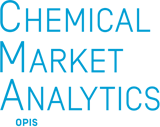- Market Overview
- Key Benefits
- Service Features
- Annual Table of Contents
Market Overview
Duration: Long-term outlook to 2050
Diisocyanates and polyisocyanates are reactive intermediates, which typically are reacted with the hydroxyl groups of polyol coreactants to form polyurethanes. Toluene diisocyanate (TDI, also called tolylenediisocyanate) is derived from toluene and is most commonly used for flexible foam used in furniture, bedding, and automotive components. A fast-growing application of TDI is in electric vehicles that require strong, but lightweight, materials. As advancements continue in the development of electric vehicles, TDI consumption per vehicle is expected to trend upward to ensure electric vehicles are as light as possible. Another area with high growth opportunities is the development of more environmentally friendly flexible foams for the automotive industry, including TDI-based flexible polyurethane foams made with renewable or recycled polyether polyols.
The three largest producers, BASF, Covestro, and Wanhua Chemical, account for about 60% of global nameplate capacity as the TDI market is concentrated owing to high barriers of entry related to proprietary technology and complex production processes. However, technology licensing has become less of an obstacle as producers have developed their own technology, especially in mainland China. Over 90% of TDI capacity is in Northeast Asia (mainly mainland China), West Europe, and the United States. New world-scale capacity in the future will likely be limited to the Asia Pacific region, particularly in mainland China. In the U.S., producers may decide to debottleneck existing plants given the low-cost position. In other emerging economies, such as India, the Middle East, and Central Europe, construction of TDI plants could occur over the next ten years. The concentration of production and exports within only a few markets contrasts with a high number of importing markets. The largest net importers include Brazil, Poland, Russia, Turkey, India, Indonesia, and Vietnam.
Key Benefits
Duration: Long-term outlook to 2050
The World Analysis – Ethylene provides a comprehensive analysis and key insights of critical market developments as they shape the future outlook for the global ethylene market.
The following reports, data files, analytical tools and visualization modules are available online and can be downloaded from our website:
- Direct Access to the Subject Matter Experts
- In-depth exploration of present market strategic insights, recognition of key challenges, and presentation of our experts’ forecasts and analysis
- Explanatory Notes detailing data sources, methodologies, unit and conversion factors, and World Analysis deliverables.
- Energy and Economy assumptions
- Price, cost and margin base assumptions forecast and sensitivities analysis, including price assessment methodology, including price definitions across all regions.
- Excel data files with standard supply/demand graphics and price forecasts extended to 2050, trade grids with country and regional trade flows Data appendix (Excel) with supply/demand, capacity and trade tables.
- An online dashboard visualization of capacity, supply/demand, trade grids, and price, cost and margin forecasts
- Supply/demand and capacity database access via data browser
- Data Appendix (Excel) with supply/demand and capacity tables
- Capacity by company/shareholder, capacity integration, top producer/consumer and surplus/deficit capacity ranking, and ownership/subsidiary information
In addition to the main product, ethylene, capacity data and brief textual analysis are provided for the following products:
- Acetaldehyde (ACH)
- Alpha Olefins (AOL)
- Ethanol (EOH)
- Ethyl Chloride (ECL)
- Ethylbenzene (EBZ)
- Ethylene Dichloride (EDC)
- Ethylene Oxide (EOX)
- Ethylene Propylene Rubber (EPR)
- High Density Polyethylene (HDPE)
- Low Density Polyethylene (LDPE)
- Linear Low Density Polyethylene (LLDE)
- Propionaldehyde (PRH)
- Vinyl Acetate (VAM)
This World Analysis contains detailed information on capacities, production, demand, and trade for all significant producing and consuming countries and regions. Although data gathering is essential for understanding history and potential future trends, we believe that the interpretation and analysis of the data is the most valuable information to our clients.
Service Features
Duration: Long-term outlook to 2050
The World Analysis – Ethylene provides a comprehensive analysis and key insights of critical market developments as they shape the future outlook for the global ethylene market.
SUPPLY/DEMAND BALANCES
Frequency: Bi-annual
Format: Excel
Timeframe: 10-year forecasts available from periods 1990 – 2050
Area Coverage: By country/region; include “hypothetical” capacity changes in the forecast period
Chemical Coverage: Ethylene
CAPACITY DATABASE
Frequency: Updated daily
Format: Excel
Timeframe: 10-year forecasts available from periods 1990 – 2050
Coverage:
- Nameplate capacity on individual plant location by producer and by the shareholder for main study products + essential derivatives
- Integration table and top producer and consumer ranking tables (includes net surplus/deficit)
PRICE & COST FORECASTS
Frequency: Quarterly
Format: Excel
Timeframe: up to 2050
Area Coverage: For the key regions of North America (US), Europe & Asia
Chemical Coverage: Ethylene
TRADE GRIDS
Frequency: Bi-annual
Format: Excel
Timeframe: 1 year of history, up to 10 years of forecast
Area Coverage: Between partner countries and by region
Chemical Coverage: Ethylene
REPORT WITH STRATEGIC INSIGHTS AND EXECUTIVE OVERVIEW
Frequency: Annual
Format: PDF/HTML
Timeframe: 5-year history, forecast to 2050
Coverage: Regional market summaries
- Production economics/snapshots for selected regions/processes
- Production process/technology overview
ADDITIONAL FEATURES
- Access to our global team of subject matter experts
- Interactive data visualization module (dashboard)
- Standard supply/demand graphs
- Data appendix with supply/demand and capacity tables
- Supply/demand and capacity database access via data browser
Annual Table of Contents
- Introduction 5
- Executive Overview 7
- Strategic Insights 11
- Economic Forecast Update 11
- Energy Transition 11
- Implications for Ethylene Feedstock Supply 11
- Crude Oil-to-Chemicals (COTC) 12
- Net Zero Emissions 14
- Steam crackers in mainland China 16
- Impact of the Ukraine Conflict 18
- European Green Deal and Fit for 55 19
- New US Laws that may impact petrochemical industry 21
- Plastic Circularity 22
- North America 24
- South America 27
- West Europe 30
- Central Europe 33
- CIS & Baltic States 36
- Africa 39
- Middle East 42
- Indian Subcontinent 45
- China (mainland) 48
- Other Northeast Asia 51
- Southeast Asia 54
- Production Process Overview 57
- Introduction 57
- Ethylene Production 57
- Ethylene Technologies and Licensing 58
- Alternative Ethylene Production Technologies 59
- MTO Process 59
- Fischer-Tropsch Process 61
- Refinery Off-Gas 61
- Production Economics 62
- Explanatory Notes 62
- United States 63
- Purity Ethane 63
- Propane 64
- Butane 65
- Light Naphtha 66
- West Europe 67
- Full Range Naphtha (High Severity) 67
- Propane 68
- Butane 69
- Southeast Asia 70
- Full Range Naphtha (Low Severity) 70
- Northeast Asia 71
- Full Range Naphtha (Low Severity) 71
- Propane 72
- Butane 73
- Coal-to-Olefins 74
- Methanol-to-Olefins 75
- Price Forecast 76
- Methodology 76
- North America 77
- West Europe 78
- Asia 79
- Ethylene Price Forecast Tables 81
- Supply/Demand Forecast Methodology 82
- Appendix 86
- Changing fortunes of the olefins industry in the CIS and Baltic States 86
- The renaissance of Middle East and Africa olefin projects 88
Market Coverage
Film & Sheet
Manufacturing
Packaging
Plastics
Related Products
Related Chemicals
- Acetaldehyde
- Alpha Olefins
- Ethanol (Fermentation)
- Ethanol (Synthetic)
- Ethyl Chloride
- Ethylbenzene (EB)
- Ethylene
- Ethylene Dichloride (EDC)
- Ethylene Oxide (EO)
- Ethylene Propylene Rubber (EPDM)
- Polyethylene Resins, High-Density (HDPE)
- Polyethylene Resins, Linear Low-Density (LLDPE)
- Polyethylene Resins, Low-Density (LDPE)
Looking for Short Term Analysis ?
Your Success, Our Priority
In a world where markets evolve rapidly, having the right insights is the key differentiator. Partner with us for critical market insights that propel you beyond competition. Your success is not just a goal, it's our commitment.
Contact us today to revolutionize your approach to business strategy with Market Insights!



